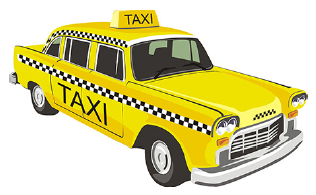This problem solving activity has an algebra focus.
Mia and Hunter call a cab. The taxi driver charges a $1 flagfall when they get in the car.
The charge is then $2 for each kilometre they travel.
They have $23 between them.
How far can they travel?
- Count in twos using odd numbers.
- Describe a repeating number pattern.
The problem requires students to be systematic in their recording as they explore an add two pattern beginning at one. They should have prior knowledge of skip counting and/or repeated addition, and be able to count in twos.
- Copymaster of the problem (English)
- Copymaster of the problem (Māori)
- 1 and 2 dollar coins (pictures or play money)
The Problem
Mia and Hunter call a cab. The taxi driver charges a $1 flagfall when they get in the car. The charge is then $2 for each kilometre they travel. They have $23 between them. How far can they travel?
Teaching Sequence
- Ask students who has travelled by taxi, uber, rideshare etc. Talk about the flagfall (a fixed amount of money that is payed at the start of a taxi journey). This is common in Australia, so some of your students may be unfamiliar with the term. Talk about the meaning of a $2 per kilometre charge.
- Ask: If you want to travel 4 km how much would it cost? Discuss solutions.
- Pose the problem for the students to work on in pairs. Provide play money (or a digital representation) for students to use as necessary.
- As the students work, ask questions that focus their thinking on the repeating pattern of twos.
What are you using to solve this problem? How is that helping you?
What numbers are you using? Why?
What is the next number? How do you know? - Share solutions. Highlight examples of systematic recording. You may wish to model making a table as a systematic method of recording.
- Conclude with some class practice counting forwards and backwards in twos using different starting numbers.
Extension to the problem
How far can Mia and Hunter travel if they have $40?
Pose problems with variations in the flagfall, $ rate /km, and amount of money.
Solution
A table is an organised way to record the solution.
| $ | 1 | 3 | 5 | 7 | 9 | 11 | 13 | 15 | 17 | 19 | 21 | 23 |
| km | 0 | 1 | 2 | 3 | 4 | 5 | 6 | 7 | 8 | 9 | 10 | 11 |
The friends can travel for 11 km in the taxi.
Solution to the extension
The friends can travel 19.5 km with $40.
